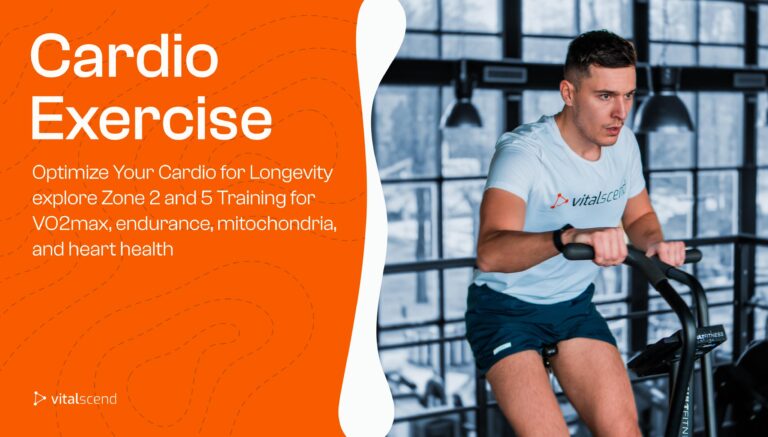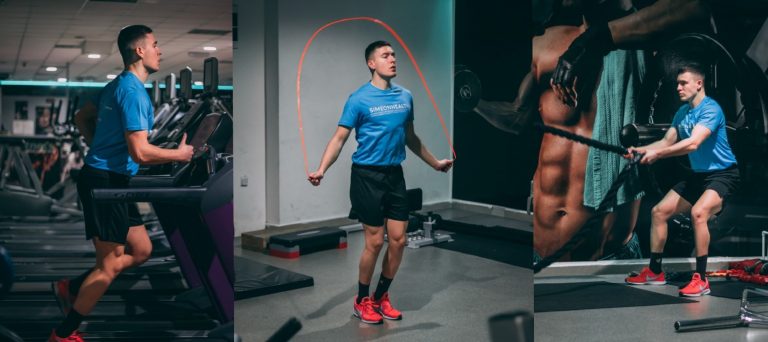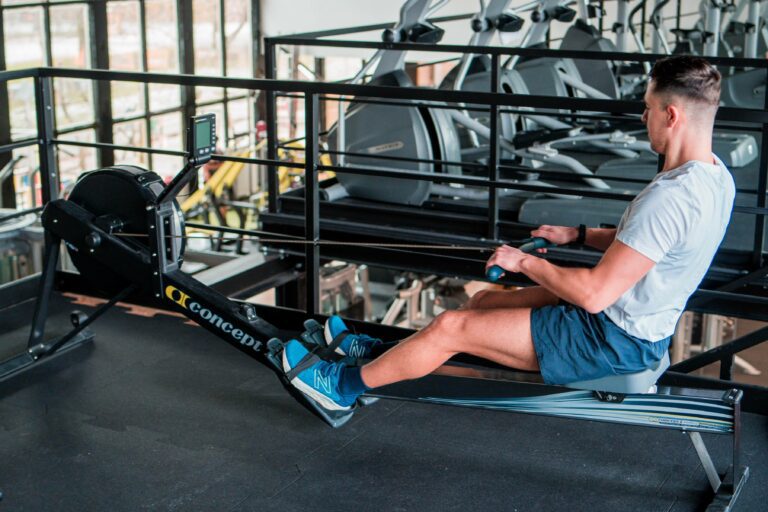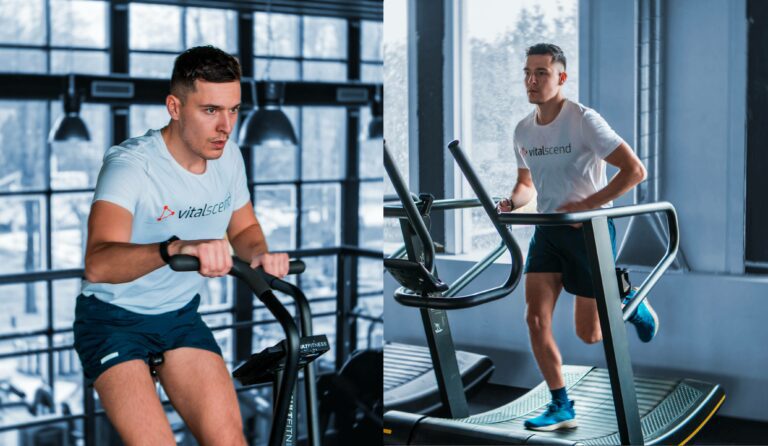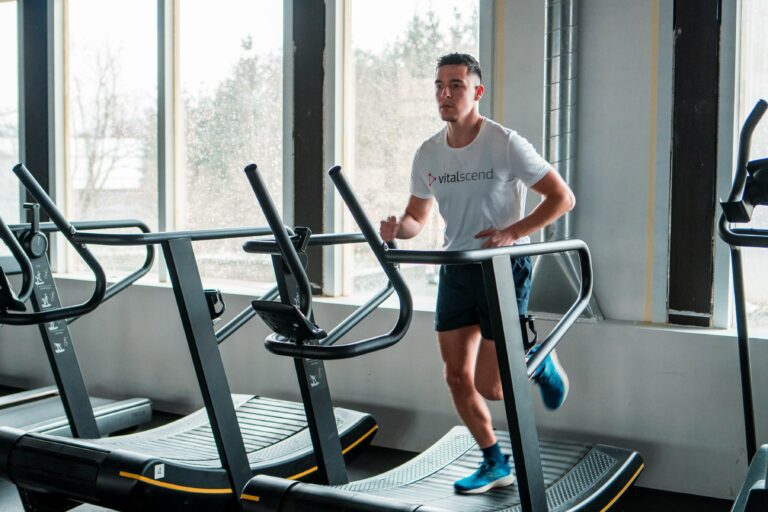HIIT vs Long Steady Cardio | Which One is Better?
If you are thinking about doing cardio, there are two options. Either a longer cyclic activity like running, at a low to moderate pace, or HIIT, high-intensity interval training. They both have their beneficial effects, but which one is for you? HIIT vs Long Steady Cardio everyone, buckle up.
Whether you are in for the quickest fat-loss and strength-gain method, or you’re interested in improving cardiovascular health, healthy weight management, and endurance, we got you covered. Let’s jump right in.
Cardio 101
Cardio is another name for exercise with repetitive movements that increases our heart rate and demands higher-than-normal energy production. It is a cyclic activity done at a certain intensity, with a certain tempo. It increases oxygen consumption, and energy expenditure and indulges the cardiovascular and respiratory systems. If you’re interested in cardio, make sure to check out our Cardio 101 Guide.
Cardio Energy Demands
Cardio is pretty efficient in burning calories, hence why it is the most popular type of exercise for weight management. The energy demands placed on the body depend on its intensity, duration, and volume. The higher the intensity, and the longer the activity, the more calories we’ll burn.
But is high-intensity interval training (HIIT) better than long steady-state cardio workouts like running, cycling, or swimming at a slower pace, for longer period?
It seems that both types are good, but for different reasons. One increases endurance and has more physiological benefits, increases energy expenditure, aids in weight loss, and so on. The other one has more of an anabolic effect, stimulates fat loss, improves strength, and is a bit more time-efficient.
HIIT vs LISS cardio – which one is better?
There’s no one that’s superior, they’re just different. HIIT is more suitable for increasing heart and lung function (VO2max), burning more calories faster, and boosting metabolism. They do pose higher stress to the body, one needs longer recovery from HIIT. LISS on the other hand is more enjoyable, with higher adherence. It’s the low-paced running, swimming, or hiking that’s great for weight loss. It also optimizes mitochondria function, boosts energy, and is healthy for the heart.
Which cardio burns the most calories?
Per minute, HIIT cardio is superior. It’s logical since higher intensities burn more calories. However, that’s effective when you’re squeezed on time, but we also need longer recovery and it’s harder to do.
An important thing to consider is, HIIT burns glycogen more, not fat as much. LISS burns around 50% more fat than HIIT, as we can tap into fat stores under such conditions. So total calories burned isn’t equal to the % of fat loss, consider that.
Aerobic (Running) vs. Anaerobic (HIIT) Work.
When it comes to differentiating HIIT vs. Long Steady Cardio, the main point is whether the aerobic or anaerobic system dominates in energy production during the workout. High-intensity interval training dominantly stimulates the anaerobic system for energy production. Longer, steady-state cardio like running or swimming uses different fuel, activating the aerobic system more.
It is logical that anaerobic workouts, which are higher in intensity, would last for shorter periods of time. These use up glucose, and glycogen and help recycle ATP with Creatine Phosphate. Trying to sustain long times at higher intensity will result in the accumulation of lactate and cause acidosis in the body, which is inhibitory for exercise continuation.
On the other hand, aerobic workouts use glucose at first but then shift to using ketones (fats) for fuel, which are more energy-efficient. These go through longer and more complex physiological pathways but create higher amounts of ATP, hence why we can last longer at lower intensities.
Intensity Level of Cardio
Your cardio intensity will dictate whether you are activating the aerobic or anaerobic system dominantly. This is where the difference between HIIT and longer steady-state cardio lies.
Intensity can be split up into five different levels, used by professional coaches for optimal progression and performance optimization of their athletes. The intensity of such activity is measured in HRmax % or VO2Max values. The higher the HRmax and VO2max values are, the greater the intensity. Here’s a reference.
| Intensity Level | VO2max or HRmax | Activity Example |
|---|---|---|
| Very Low Intensity/ Light Activity | 30-39 % VO2max, 45-55% HRmax | Light Walking |
| Low Intensity/ Light Activity | 40-59% VO2max, 40-59% HRmax | Jogging, Brisk Walking |
| Moderate Intensity/ Moderate Activity | 60-79% VO2max, 70-90% HRmax | Running, Elliptical, Climbing |
| High-Intensity/ Vigorous Activity | 80%+ VO2max, 89%+ HRmax | Boxing, Fast Swimming, Jumping Rope |
| Near Maximal to Maximal | 100% VO2max, 100% HRmax | Sprinting, Jumping, Cycling at Max. Speed |
The Effect Of Cardio
The physiological effects of cardio on the body depend on the intensity of training. The higher the intensity and longer the duration, the more calories we’ll burn. However, the duration is shorter with vigorous-intensity training and longer with a slow-moderate tempo.
This is important because each of these different levels affects the body in a different way. While the most similar point is each level will help us burn calories, different levels are suitable for different goals.
| Intensity Level | Benefit and Use |
| Light Activity | Warm-up, Active Recovery, Long Duration |
| Moderate Activity | Weight-Loss and Fat-Burning |
| High Intensity | Aerobic Fitness, Improving Endurance |
| Vigorous Intensity | Anaerobic Training, Lactate and Speed (Speed Endurance) |
| Maximum effort | Anaerobic Training, Glycolytic System |
How long should I do cardio to burn fat?
The more intense an activity is, the more calories we’ll burn. The more it lasts too, the more calories we’ll burn. The problem is, we can not train at the highest intensity for long periods of time. So we should either choose to focus on short and high-intensity interval trainings 10-20 minutes, or longer steady cardio which lasts 30-90 minutes.
How long does it take to get in shape with cardio?
It depends what the individual considers being in shape is. To give you a better perspective, with 4-5 cardio sessions a week, people can loose up to a kilogram of bodyfat. Although the weight loss might seem faster at the beginning, some of it is water-loss and not fat-breakdown.
How long should a cardio workout be?
It heavily depends on the intensity of the activity. Generally, a long steady cardio session would last around 60-120 minutes, done at fairly low intensities, including exercise such as jogging, swimming, cycling or hiking. For more intense activities such as boxing, sprinting, jumping rope, running uphill etc., aiming at 10-20 minutes of total activity can be enough for a good sweaty session.
HIIT vs. Long Steady-State Cardio
Short or Long Cardio, which one is better? In terms of calorie expenditure, longer steady-state cardio can be more efficient as it is sustained for longer. However, science shows that HIIT also stimulates fat loss, sometimes being even more “time-efficient”, counting in the “after-burn effect”.
It depends on what the end goal is, and how these types fit into one’s lifestyle. HIIT burns more calories quicker, so if time is of great importance, this is the time-effective way to go. However, using HIIT continually to lose fat is a losing battle. That’s because light movement like walking, increasing your protein, and eating cleaner are more practical approaches to long-term fat loss. HIIT excels in aerobic performance improvement, things like VO2max or stamina.
If body composition is the main goal, long steady state cardio wins. You really need to walk more, take the stairs, and move a bit to keep your metabolism going. LISS is more of a recovery type work, instead of a stressor that spikes cortisol like HIIT. Meaning, hitting a 40-minute steady rowing or swimming session can be far more practical for sustaining a healthy weight and improving heart health.
Fun Fact
Many people underestimate the pressure on the joints long cardio has. If you’re running a lot, you must work on your leg and core strength to support such shocks. Instead, you can pick swimming, rowing, or hiking to minimize joint pressure.
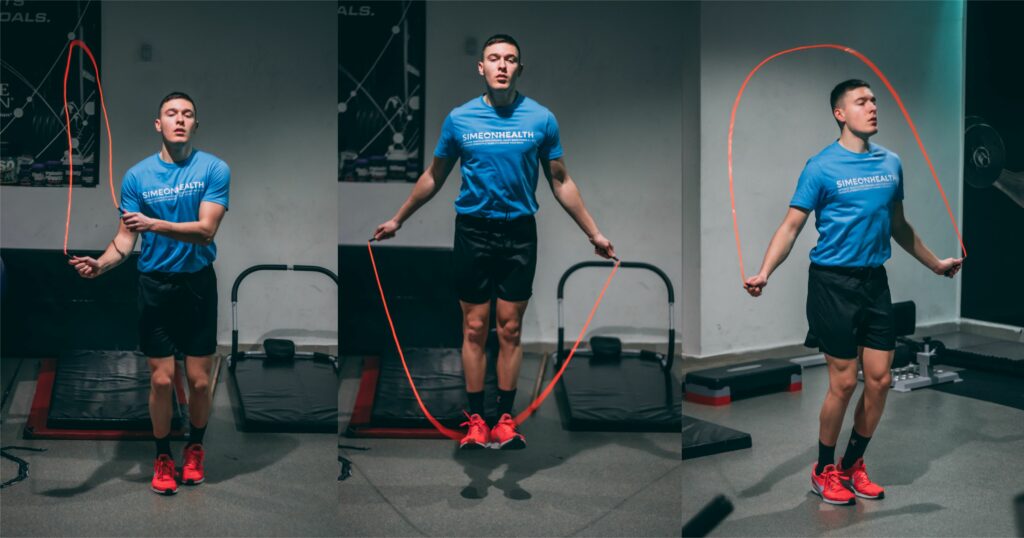
High Intensity Interval Training | Benefits & Effects
It turns out HIIT isn’t just a tool for burning calories. Research shows that high-intensity training can be beneficial for other health markers, such as VO2max, body fat percentage, and insulin sensitivity. (1)
HIIT is considered intense cardio, or interrupted session which includes different exercises done at vigorous intensities. The intensity should reach around 80% to 90% of the maximal, with short rest periods in between.
- Compared to slower cardio, HIIT was more effective in improving both aerobic and anaerobic energy capacity. Moderate-intensity training only improved aerobic power instead. (2)
- HIIT exercise stimulated fat loss in both normal and overweight individuals – it increased energy expenditure and induced fat oxidation. (3)
It turns out the some of the benefits come due to something called EPOC, following a HIIT session. It is known as the extra or additional energy expenditure that happens hours after the workout has finished.
- So HIIT is more effective for a quicker weight loss and pays off more for the time put in. (4)
- But, longer low-intensity cardio has a ton of other benefits, and is still quite effective and more suitable for other individuals, although may not be the quickest way to burn fat.
Key Point
HIIT or high-interval intensity training has proven more efficient for fat loss in terms of time, compared to long-and-steady cardio.
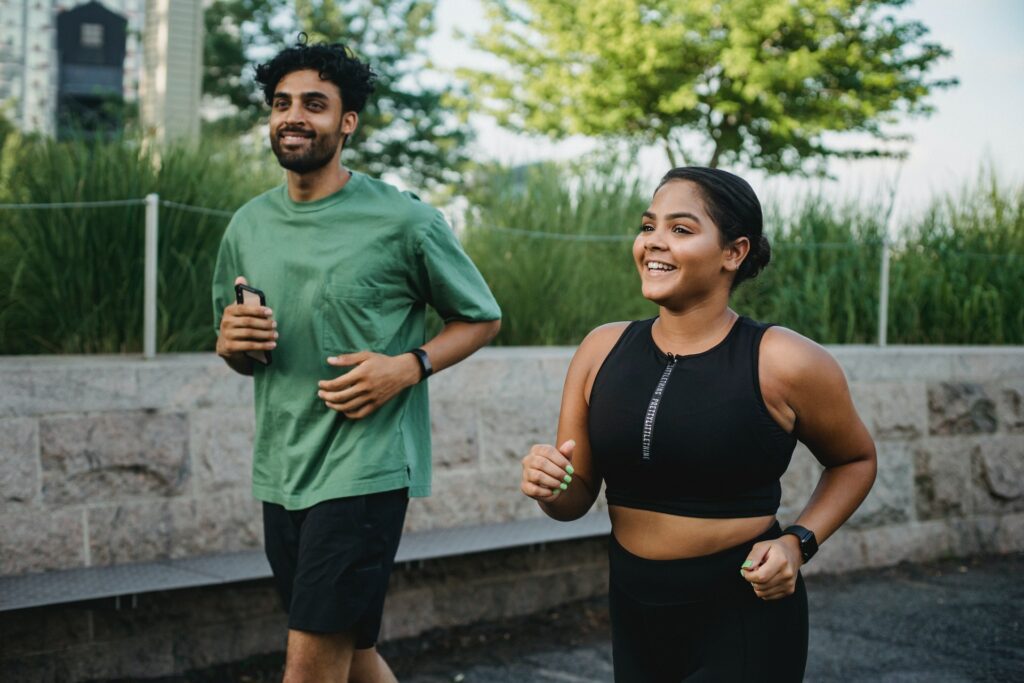
Long Steady-State Cardio | Benefits & Effects
As we’ve seen, HIIT is a pretty tough competition for long and slow cardio, for the quickest fat loss. However, longer and steady-state cardio comes with many other benefits.
But what is a Long Steady-State Cardio actually? Basically, training at intensities that are fairly comfortable, somewhere between 60-80% of HRmax, can count as aerobic exercise. It uses fats for fuel, which is more effective in producing energy, hence why it can be sustained longer. Think of activities like swimming, cycling, running, hiking, or anything repetitive and cyclic in nature.
- Aerobic exercises done at low to moderate intensities is good for health. (5) improves cardiovascular and respiratory function, and may reduce cholesterol, reduce CVD risk and improve circulation. (9)
- 24-week period HIIT did not significantly outperform moderate-intensity training in terms of energy expenditure (calorie burning). (6)
- For older individuals, endurance training alone was effective enough for providing health benefits in a 20-week trial. Resistance training combined with endurance was as effective as endurance alone. (7)
- Even a single session of aerobic exercise was effective enough to promote cognitive benefits. Activity at moderate intensity proved effective for improving learning and neuroplasticity. (8)
In terms of healthy weight management, slower cardio might be even better, as it is more sustainable and practical in the long run. Running, swimming, or cycling all help us burn calories, by increasing energy expenditure.
Aerobic training at a slower pace, with low to moderate intensity, has a lot more pros than cons. From positive effects on weight management, diabetes, and blood sugar, to bone density improvements, reduction of stress, and aging slower, it covers it all. (10)
key point
Long steady-state cardio at low to moderate intensity comes with many other health benefits, such as improved cardiovascular health and lipid profile, improved endurance and circulation, stress reduction, etc. It can be highly effective in terms of weight loss, pretty practical, and sustainable over the long run.
Which One is Better?
Comparing the two, we can immediately see how they differ. HIIT is more anaerobic in nature, it’s the quickest option for fat loss, it increases VO2max, and improves aerobic performance. Longer and slower cardio, on the other hand, can be more practical, easily sustainable, and make weight management easier.
So the answer is very individual. The first one improves both aerobic and anaerobic systems, dominating in the area of VO2max and heart health. The second one’s a better alternative for weight loss, as properly done it puts less pressure on the joints, improves overall health, endurance, and it’s way less taxing on the body.
Research Limitations
*Studies have some limitations, important to evaluate the validity of their results. Here’s a highlight of some and NOT ALL studies (and limitation), shown in this article, for context.
- Short duration of study, primarily assesses acute effects *6 weeks, 4 weeks.
- Difficult to generalize the effects of specific exercise protocol (HIIE), as there are different responders.
- Studies which test training in specific populations *overweight females, older men, active individuals, young males.
- Aged data or data older than 10 years *1991, 1996, 2004, 2011.
HIIT: Strength Training & Fat-Loss
High-intensity interval training, being a quicker and more intense workout works on the anaerobic system. It is considered more time-efficient for quicker fat loss but might be too much for some people.
Although pretty catabolic during training, it has a higher anabolic effect later which might be more suitable for muscle gains. On the other hand, HIIT trains the anaerobic system, and can improve VO2max values as most of it is trained near maximum effort.
The afterburn effect definitely makes HIIT a bit more special, allowing the individual to burn more calories hours after the workout has been done. This is done by increasing energy expenditure and speeding up one’s metabolism.
LISS: Weight-loss & Endurance
For sustainable weight loss, cyclic activities like walking, hiking, swimming, and cycling can be a lot more practical for weight management. They are less intense, last for longer, burn more NET total calories, and are way more practical.
The duration is the key factor that holds your “calories-burned” number high, being great for fat loss. Training at submaximal activity also burns more fat for fuels, instead of glycogen as HIIT does.
Steady-state is far better for improving long-distance endurance. It also is quite effective in improving a ton of other health-related markers, especially cardiovascular ones.
Conclusion
HIIT: High-intensity interval training is the shorter and more intense approach to cardio. It works the anaerobic system quickly and results in time-efficient fat loss due to the “afterburn effect”. Overall, it is better for younger individuals, and those performing strength training, as it is less likely to put the body in the longer catabolic window. HIIT can improve VO2max values, a measure of aerobic fitness.
LISS: Longer steady-state cardio done at low to moderate intensity has more health benefits, dominantly on the cardiovascular system and longevity. These are more sustainable, easier on the joints, and have more alternatives. They burn lots of calories because they last longer, so the weight loss effect is there. It can increase endurance and stamina, especially for longer distances.
Frequently Asked Questions
HIIT vs. Long steady cardio, which one is better?
HIIT can be more effective for quicker weight loss, because of its “after-burn” effect it provides, increasing energy expenditure and calorie burning hours after the workout has finished. It is usually a good combination to add in with strength training.
Long steady cardio can be a lot more practical and sustainable option. Plus, LSC lasts longer and aims at intensity of 60-70% VO2max, which is very effective in burning fat specifically, as it uses fats for fuel at that intensity. Lung capacity, stamina and energy can all be improved with it too.
What is cardio and what benefits does it provide?
Cardio is an aerobic exercise that’s done at a certain tempo. It is a cyclic activity with repetitive movement. Usually great for weight loss, stamina, conditioning, lung capacity and endurance. Different types include running, hiking, ellipticals, jump rope, swimming, cycling, boxing, etc.
Does strength training burn fat?
Yes, strength training as any other training which involves movement does burn fat. However, it is fair to say that it won’t outperform cardio, per the given time. One superpower of strength or hypertrophy training though, is that they add muscle size which increases the amount of metabolically active tissue in the body. This makes our body a better calorie-burning machine, as muscles use up more calories than fat.
Is cardio bad for muscle growth?
Yes, and no. If by cardio we mean an endurance-based training of ultra-long distance and time, then yes, cardio can be detrimental for muscle maintenance or growth. If we are running marathons every day, yes this could apply. However, for the most people who are thinking of doing a 5km run, some hiking, a 10-minute sprinting, 20 minute jump rope or boxing, you have nothing to worry about. The catch is, when trying to build muscle we should eat high-protein diet with slight caloric surplus (300kcal). By too much cardio, we can run into caloric minus, which can result in muscle loss.


